Schmaltz, aka “Liquid Gold,” is the not-so secret ingredient in the classic Ashkenazi kitchen. So while last week I wrote about some truly beloved Sephardic baked goods (and a big shout out to all of the new followers to my blog, who came via that popular post), I felt this week I should go to my own heritage. After all, I value, love, and aim to write about the foods of Jews from all over the world.
In my previous Cooking Jewish Culture post, about choucroute garnie, I mentioned that I had rendered some chicken schmaltz as a preliminary step for that dish. But the truth is that while I had eaten schmaltz before, and enjoyed what other people made with it, I had actually never made any myself! Though the process is truly simple, for some reason I always felt somewhat intimidated.
As I prepared chicken for other meals, I would trim pieces of excess skin and fat, and throw them into a ziploc bag in the freezer, but they were just kind of sitting there in a block, staring at me every time I opened the door. I’m not sure what I was so scared of, because it certainly wasn’t the eating part that bothered me. And if millions of Ashkenazi women made schmaltz for centuries, I figured I could probably handle the task!
But first, as always, some history…
Why Schmaltz?
Every culture cooks with some kind of fat. Some more and some less, but all do it. But the decision of which fat to use has varied widely throughout history. Obviously climate and available ingredients played a major role, as well as (at times) technological know-how.
The three most common categories have been oils (from either fruits or seeds), milk fats (butter and clarified butter), and rendered animal fat. While many Jews historically have used butter of some kind (see, for example, the “samneh”/clarified butter in Yemenite Jewish cuisine), it was never their universal cooking fat. This is due to the religious prohibition against mixing dairy and meat products. So butter couldn’t be used to cook meat dishes.
In more temperate regions, particularly those around the Mediterranean, this didn’t cause too many culinary issues. Olive oil was commonly used, or in some places other types of seed-derived oils. But in colder regions, olives were unavailable, and the seed oils were less commonly made (though they definitely existed — poppy seed oil was common in Poland since medieval times). People of all religions throughout the more northerly reaches of Europe would cook using rendered animal fat. The most common for non-Jews was lard, derived from pigs, but that was obviously also a no-go for Jewish cooks. And while cooks throughout history have also rendered the fat of cows or lamb, these are not the most cost-effective if you need enough to use on a daily basis.
Ashkenazi Jews, therefore, turned to rendering poultry fat, calling it schmaltz, which really just means “fat.” As I mentioned in the choucroute post, the original in Alsace was typically rendered from geese, but in Eastern Europe, chicken or duck schmaltz became way more common.
A beloved by-product of making schmaltz is gribenes — the cracklings of the skin that remain after the fat is rendered out. And underscoring how long Ashkenazim have made this, and how beloved it was, I came across a reference in the writings of Maharil, Rabbi Yaakov ben Moshe Levi Moelin (C 1365-1427), who lived in the Rhineland region. He mentions taking a pot of goose gribenes that had hardened due to the cold, and warming them to soften them on a special plate sitting atop the furnace on Shabbat.
Modern Schmaltz
The story of schmaltz in the 20th century is a bit less smooth. With the wave of new immigrants from Eastern Europe to the U.S., schmaltz was definitely still a thing. We actually hear of poultry being raised in the backyards of tenements on the Lower East Side. (On a side note, when I lived on the LES for two months, back in the mid ’90s, there was a store on Delancey Street, just beneath the Williamsburg Bridge, that had cages with live chickens for sale. I assume they slaughtered them on the spot, though I never went in to check, but I did get a laugh when one morning, as I walked to the subway, I saw a chicken or two that had “escaped” and were wandering around on the sidewalk — in Manhattan! No idea how many people bought these chickens for schmaltz though…)
Three main things were responsible for almost entirely wiping schmaltz out of American-Jewish cuisine. First, a large percentage of those early immigrants secularized and stopped keeping kosher. To varying degrees, some might have replaced their schmaltz with butter, even for meat dishes, while others went so far as to use lard. Then, for those who still kept kosher, vegetable-based alternatives rose in prominence. Margarine, and especially Crisco (hydrogenated shortening) entered the kosher kitchen big time. Crisco, in fact, marketed heavily to kosher consumers, in English and Yiddish, pushing their product as a miracle food that Jews had been awaiting for millennia. And we bought it! Finally, with the rise of health-consciousness in 1970s America, the fear of cholesterol pushed almost any remaining schmaltz out of American-Jewish kitchens. (The same, of course, happened later in relation to Crisco and people’s increased avoidance of trans-fats.)
As an example, I remember, as a child we sometimes had chicken schmaltz in our freezer. My mom wouldn’t cook with it, but we would sometimes spread it on our Friday night challah, as others might do with butter or margarine. That beloved treat disappeared from our house by the early ’80s, once my Dad started watching his blood pressure and cholesterol.
The 21st century, however, has certainly brought some degree of resurgence for schmaltz. There has been an increased yearning for the lost Ashkenazi soul foods, and many (such as the Gefilteria) have popularized the classics. While some only use it in moderation, schmaltz is no longer the scary word that it was just a few decades ago for most cooks. I personally have many friends who make and cook with it regularly.
Making my Schmaltz
There are some variations out there. I asked friends what they do, and just went with one method. I will say, however, there are other (and maybe even better) ways out there. One person mentioned that her grandfather used to make it in a microwave! Another friend makes it in the oven (in what seems like a really easy, no fuss way to handle the process), then stores the schmaltz in a silicone ice cube tray for individual portions. I went for the standard stovetop method, in a non-reactive enameled Dutch oven.
Another debate surrounds adding water to the fat at the start. Most of my friends do not, but one person said she adds a small amount (about 2 tbsp), and she felt that it helped the fat to render more evenly. I went for the water option, but in the end, I was not able to get gribenes from my skins. It is certainly possible that I just wasn’t patient enough, and needed to let it go for longer. But I wonder if the added water had anything to do with it. Might leave it out next time.
I’ll also say that I ended up with less schmaltz at the end than I expected (though not a tiny amount), considering how much skin and fat I’d collected. But one of my friends told me she asks her butcher, whenever she’s there, for a bag of excess fat and skin. You always see them cutting it off when you buy a chicken, and they just throw it away. So he just gives it to her for free. I may need to do that myself next time!
It feels weird to post a “recipe” for this, but I’m going to do it anyway, in the hopes that it removes any intimidation factor that any of you might have, as I did. This is really not a difficult process, and as I said, there are options that all will work, more or less. Try it! Even if you mess something up (and I’m not sure how you really could), the ingredients are inexpensive and were practically waste to begin with!
Plus, I made a fun video to go with it, so enjoy that! 😉
Schmaltz
Equipment
- Strainer
Ingredients
- Approx. 2 cups chicken skins and fat
- 1 onion sliced
Instructions
- Cut the skin and fat into even-sized small pieces. The exact size doesn't matter much, but approximately ½ - 1 inch in diameter.

- Heat a large-enough (depending on how much skin and fat you are rendering from) non-reactive pot or skillet over a high flame.

- Add all of the fat and skin pieces, and turn flame down to medium low. Stir.

- Stir periodically -- don't let things stick to the bottom. As the fat begins to render out, there will be a lot of liquid in the pot or pan. Much of this is water, that you will want to let boil off. Adjust heat so that there is at least small bubbles, and you can see steam rising out.
- Once the liquid is starting to turn yellow (it will be more mild at first, like the color of mustard powder), raise the heat to medium high.

- Add the onion to the pot and stir.

- Patiently let nature do its thing. The heat will render the fat out as liquid, and evaporate the water. Keep stirring periodically, but beyond that, just let it go. This will take a few hours. You clearly don't need to watch or stir it constantly, but don't forget about it either!
- Once the liquid in the pot has reduced to mostly fat that is a deeper yellow in color, and once all of the skin pieces have shriveled up from losing most of their fat, it is time to separate the wheat from the... or better yet, the schmaltz from the skin and onions.Pour through a strainer into a large bowl. If you pour straight into a glass jar, you run the risk of cracking the glass due to the temperature and thus losing your golden treasure. Shake the strainer holding the solid pieces to make sure you let all of the goodness drip out.

- Return the skin to the pot/pan over medium flame to render out any remaining fat. Once it has all been released, and poured through the strainer, you're done. Let the schmaltz cool, and then pour into a jar. You can keep it in your fridge for at least a week, if not more.Alternatively, freeze the schmaltz either in individual portions or in a plastic container from which you can scrape out what you need each time.
Video
Notes
- When it chills, the schmaltz will turn white in color. Don't be worried -- that's what is supposed to happen!
- If you want to make this in the oven, this is how my friend described his process: "I've always just put them in a small aluminum pan, and then the next time I use the oven, I bake the skins (and fat) and pour out the schmaltz from time to time. At the end, after draining all the schmaltz, the fat remnants are crunchy and delicious."
- Some add a little salt, pepper or even garlic powder. Try it, and see if you like it.
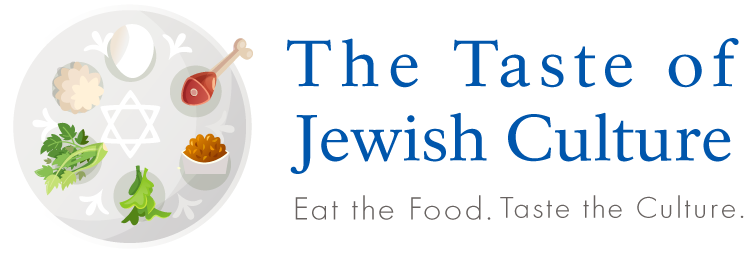
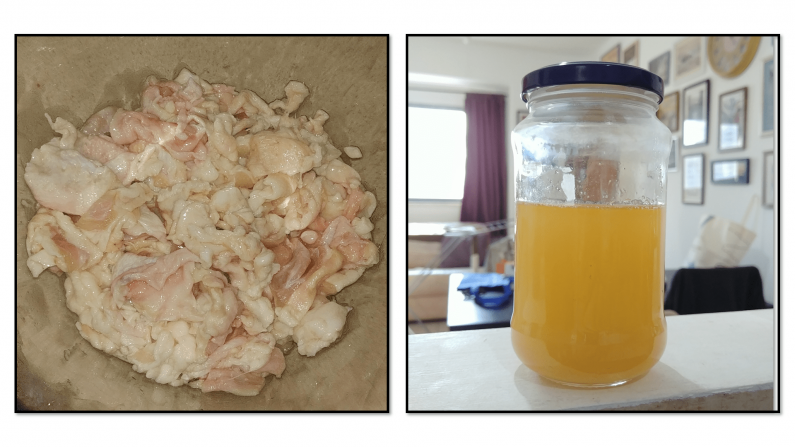
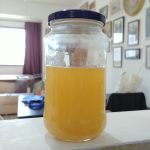
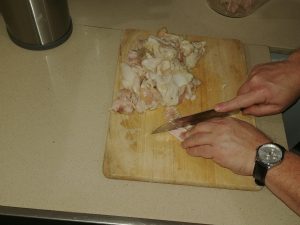
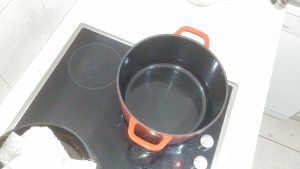
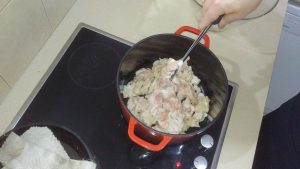
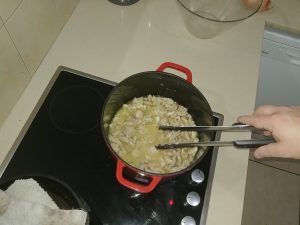
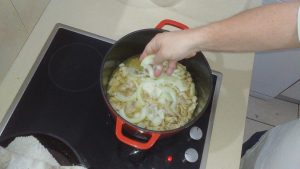
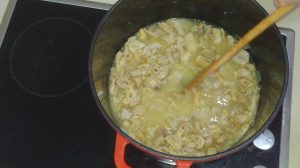
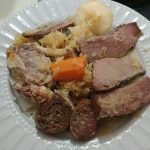
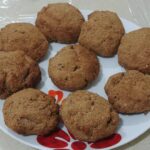
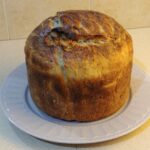


Cooking Jewish Culture: Passover Onion Rolls
[…] I’ve tweaked it a bit, improving it (in my opinion), thus making it a good option for my next Cooking Jewish Culture post. I know it is a bit late in the holiday to be posting this, but I’ve been busy, and […]
How you can make rooster schmaltz and gribenes – ACPPACKAGING
[…] Schmaltz is alleged to have originated in Jewish communities in Europe and is derived from the German phrase schmelzen, which implies to soften. To study extra concerning the historical past of this Jewish cooking staple and an genuine Jewish recipe, I like to recommend studying Cooking Jewish Culture. […]
The way to make hen schmaltz and gribenes - BUFFTHEBANANA
[…] Schmaltz is alleged to have originated in Jewish communities in Europe and is derived from the German phrase schmelzen, which suggests to soften. To be taught extra concerning the historical past of this Jewish cooking staple and an genuine Jewish recipe, I like to recommend studying Cooking Jewish Culture. […]
The best way to make rooster schmaltz and gribenes - Ashford-Beer-Festival
[…] Schmaltz is alleged to have originated in Jewish communities in Europe and is derived from the German phrase schmelzen, which suggests to soften. To study extra concerning the historical past of this Jewish cooking staple and an genuine Jewish recipe, I like to recommend studying Cooking Jewish Culture. […]
≫ Cómo hacer pollo schmaltz y gribenes
[…] Se dice que Schmaltz se originó en las comunidades judías de Europa y se deriva de la palabra alemana schmelzen, que significa derretir. Para aprender más sobre la historia de este alimento básico de la cocina judía y una auténtica receta judía, recomiendo leer Cocina Cultura Judia. […]
How to make chicken schmaltz and gribenes - Go Fair Price
[…] Schmaltz is said to have originated in Jewish communities in Europe and is derived from the German word schmelzen, which means to melt. To learn more about the history of this Jewish cooking staple and an authentic Jewish recipe, I recommend reading Cooking Jewish Culture. […]
Kasha Varnishkes - Just like they make at a Jewish Deli - Gathering Thyme
[…] Traditionally, this recipe would have been made using about 4 tbs of schmaltz. Schmaltz is rendered chicken fat. I found an interesting blog post and recipe for schmaltz on The Taste of Jewish Culture. […]
Anthony
Excellent story and recipe, thank you. I regularly buy whole chickens and butcher them down to breasts, legs, wings and thighs for freezing and make stock from the remaining carcasses and trimmings. When the stock is frozen, the fat solidifies at the top which I keep and use for cooking. Is this technically ‘schmaltz’?
OnFrenchCooking – Stocks and Bases Part 2 – On French Cooking
[…] https://www.tasteofjew.com/cooking-jewish-culture-schmaltz/ on May 20, 2024 […]
Andrew
Not a jew, ashkenazi or otherwise. But I culled around 10 old hens that weren’t laying eggs anymore. Got almost a gallon (120-122oz) of schmaltz from them. I do the oven method. I tried grinding the skin and fat this time. It works if it’s mostly frozen and definitely increased yield and reduced total time required. But don’t even try if the skin and fat isn’t at least partly frozen. No skin chips from ground fat of course, but old hens have skin too thick/tough for that so no great loss.
FunJoel
Thanks! That sounds interesting with the grinding technique. Of course, then you get no gribenes (cracklings) at the end, but if your main goal is just the schmaltz, sounds clever! 🙂